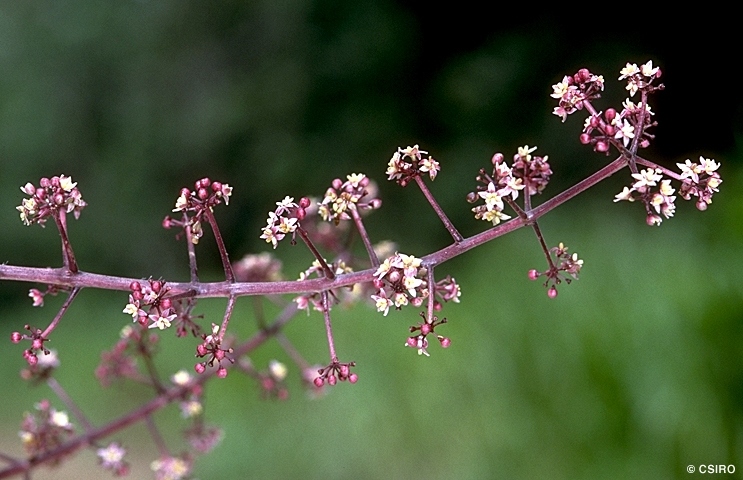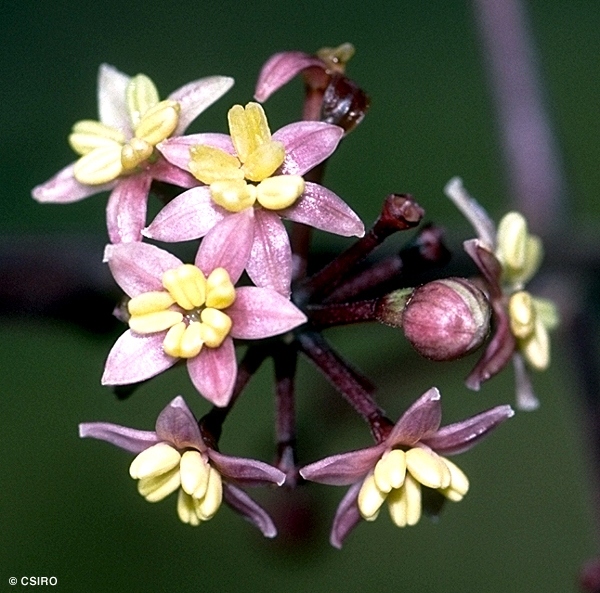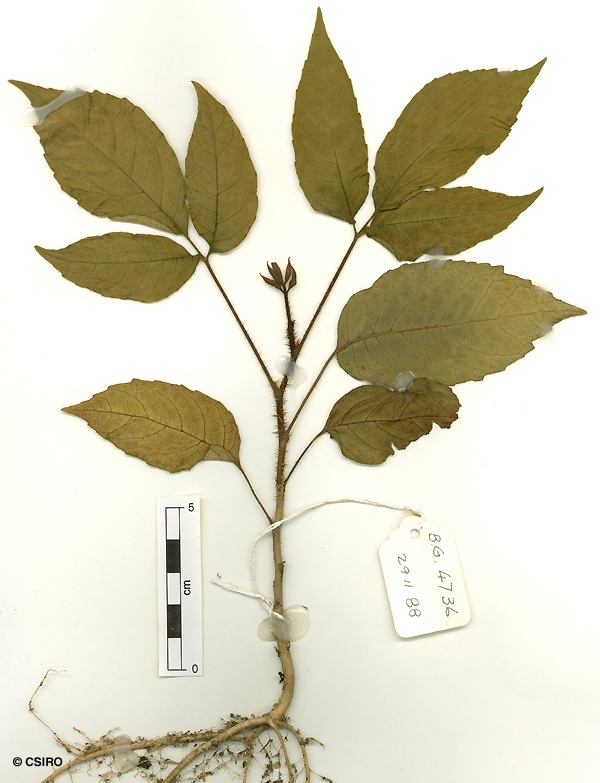Australian Tropical Rainforest Plants - Online edition
Polyscias mollis (Benth.) Harms








Harms, H.A.T. in Engler, H.G.A. & Prantl, K.A.E. (1894) Die Naturlichen Pflanzenfamilien 3(8) : 45.
Usually grows as a multistemmed, poorly formed tree seldom exceeding 30 cm dbh but often flowers and fruits as a shrub. Stem clothed in conical spines.
Flowers in umbels which are arranged in panicles. Main axis of the inflorescence and base of the main branches clothed in prickles. Calyx lobes small. Petals about 2 mm long. Style arms free and divergent following anthesis.
Cotyledons broadly ovate or orbicular, about 5-7 mm long. First few leaves produced are simple. At the tenth leaf stage: leaves trifoliolate or pinnate; leaflets ovate, apex acuminate, base obtuse usually oblique, both the upper and lower surfaces with numerous prickle-like hairs; stipules or stipule-like appendages attached to the base of the petiole, triangular, hairy and prickly; petioles and stem clothed in numerous erect straight prickles. Seed germination time 49 to 70 days.
Endemic to NEQ, a rare species found between Cooktown and Cardwell. Altitudinal range from near sea level to 1100 m. Grows as a very small but extremely prickly tree in the rain forest understory.
The word 'mollis' is usually used to describe something which is soft. The use of the epithet 'mollis' for this species seems to be particularly inappropriate as the stems, branches and even the compound leaf axes are clothed in sharp spines. It is difficult to avoid thinking that taxonomists have a strange sense of humour or we have completely misinterpreted their original species concept.





